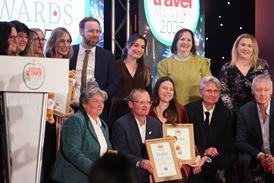Alex Grady from the National Association for Special Educational Needs and Disabilities on planning visits for children with special educational needs and disabilities.

You will be very aware of the benefits of experiences away from the classroom for all learners – putting classroom learning into context, extending and enriching cultural capital, developing social skills, and fun to name but a few.
For your learners with SEND, these benefits are likely to be even greater.
For the parents, carers and families of some learners with more complex SEND, taking their children ‘out’, to a restaurant, a play park, the cinema or any of the other ‘everyday’ (and more special) places that many families are able to visit easily, can be extremely challenging.
This could be for a variety of reasons, including sensory differences (such as extreme sensitivity to noise), social anxiety or restricted eating - any one of which may result in the child becoming anxious, stressed and upset.
For some children, this can mean that their lives are limited to school and home, and perhaps one or two other familiar places.
This makes it all the more important for their ‘school’ experience to include visits, with the support and guidance of the skilled adults who work with them, which will offer the same benefits as other children.
The added benefit for learners with SEND is that these enriching experiences can build on the skills they are learning in school, whether it’s buying something in a shop, following a timetable, noticing colours and patterns in nature, or any other of the myriad learning opportunities that visits provide.
School visits for learners with complex SEND may require more planning to help them to run smoothly:
- Talk with parents/carers about any potential challenges and develop a way of minimising these together.
- Consider how best to prepare the child – photographs? A schedule? Social story?
- Think about the most effective way of staffing the visit – not necessarily having a member of staff ‘velcroed’ to the child, but perhaps for them to supervise a group of which the child is part.
- Practise with the child some of the skills that might be needed: getting on and off a train, walking with a partner, how to behave in a museum etc.
- Have a ‘safe space’ or a ‘safe person’ that the child can go to if they become anxious or distressed.
If you take these measures, then the benefits should be significant – you, and their family, may well be amazed at how well the visit goes. And the more often you do it, the easier it will become – meaning a wider and richer experience for the child, and hopefully, some fun too.
Find out more about the National Association for Special Educational Needs and Disabilities (NASEN) at https://nasen.org.uk/












